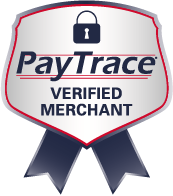Location-Based Targeting
As recently as a few years ago, advertisers had no interest in location data. A consumer’s GPS location in the world was far less interesting than other demographics used to target consumers. Marketers didn’t care whether you lived in New York City or Tuscaloosa–what mattered was your age, gender, education, income and other telling characteristics.
In 2014, this outlook has entirely changed. Businesses have come to understand location as an extremely powerful filter used to target consumers in digital marketing campaigns. This shift can be credited in large part to new channels for gathering location data–consumers now use smartphones and tablets equipped with location technology that makes this data easy to record and analyze.
Even if you aren’t primarily targeting a mobile consumer base, incorporating location into your targeting strategy can save you a lot of money while improving your campaign results. Here are some of the key benefits.
You Stop Wasting Money on Far-Away Consumers
The first key benefit of location-based targeting is the most obvious: You can stop spending money on entirely irrelevant consumers. What’s the point of promoting your local restaurant to someone who lives 1,500 miles away? Why pay to advertise products to parts of the world you aren’t equipped to ship to? At the simplest level, location-based targeting weeds out all of these consumers that will never spend on your business.
If you’re a local operation–a dentist, plumber, or other company that depends on physical foot traffic and in-person transactions–location targeting lets you spend on digital marketing in a cost-effective manner. You can ensure that everyone who sees your ads is within your service area.
You Can Spend More Heavily on Shoppers in Your Local Area
If you suddenly cut out the fat of marketing to consumers outside your target area, you free up tons of digital spending that can go to better uses. If you’re been running campaigns inefficiently, location filtering can create plenty of new dollars to re-invest into more efficient campaigns. All of these funds can go into campaigns that restrict ad displays to whatever area you choose–it could be a city, a zip code or other constraints.
Because all of these dollars will be funneled directly into your local market, you should see an uptick in the conversion rates of your ads. Every exposed consumer will be more relevant, and therefore more likely to invest in your company’s offerings. This will drive returns from your campaigns and increase your revenues.
Walk-In Specials and Other Promotions Can Be Utilized
When you market to a local area, unique promotional opportunities can be used to drive business. Just as you might mail coupons or limited-time offers to consumers in your local area, digital campaigns can be used to deliver a variety of promotions. You might choose to offer daily deals to anyone within a certain proximity of your business, or you could push in-store traffic by marketing a walk-in sale.
Even if you sell to a national or global audience, a physical location can benefit nicely by encouraging shoppers to visit the store. Furthermore, it reminds shoppers that you aren’t an online-only brand–you also have a local presence, and this physical location may attract consumers that don’t always want to do their shopping online.
Once a primitive targeting tool that couldn’t be offered with any accuracy, location has become one of the most valuable targeting tools on the digital front–particularly when paired with other targeting filters you are already using. To get started building location-based targeting into your digital strategy, contact DBC Digital today.
Greg Sherwood is CEO of DBC Digital, a marketing agency based in Denver, Colorado. With over 30 years of marketing experience with traditional and inbound (internet) marketing, Greg helps mid-sized businesses get a better return on their marketing dollars.
You can reach Greg at (303) 357-5757 or at dbc@dbcdigital.com




